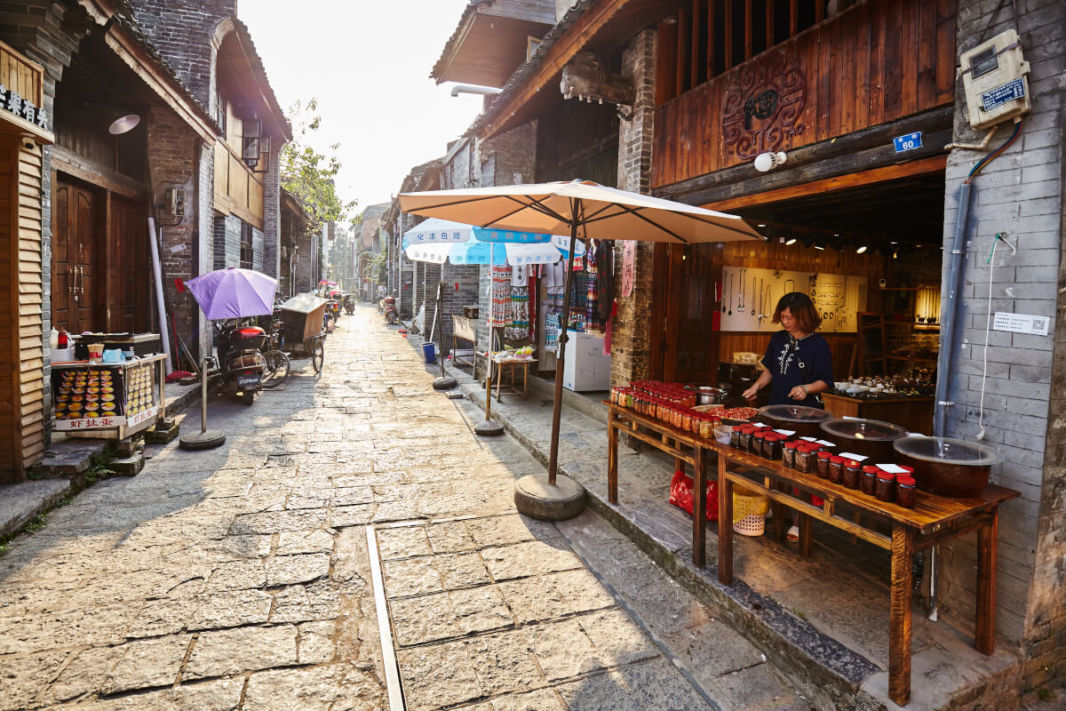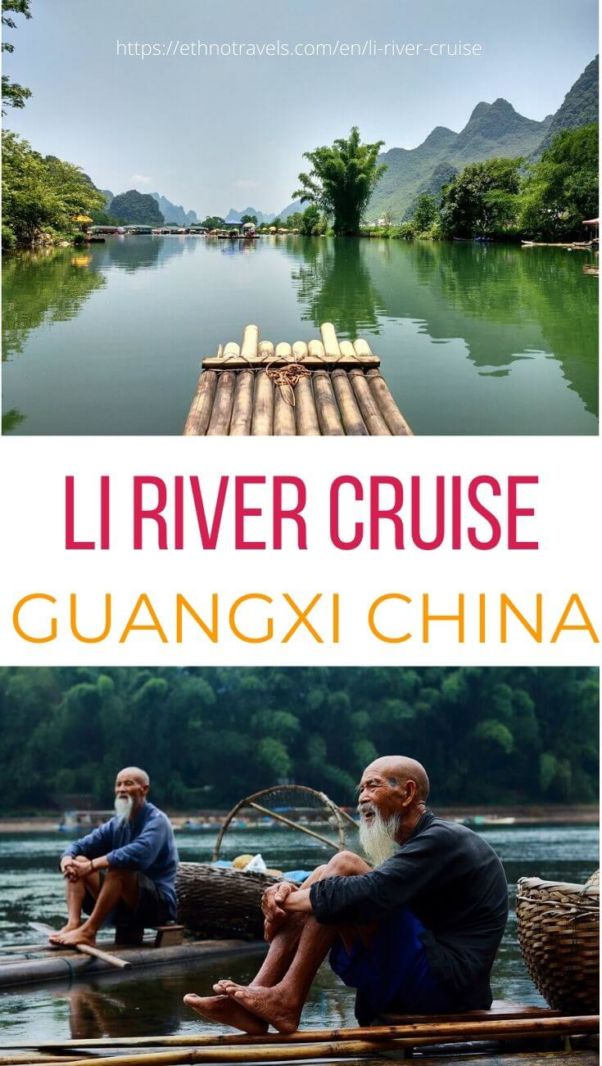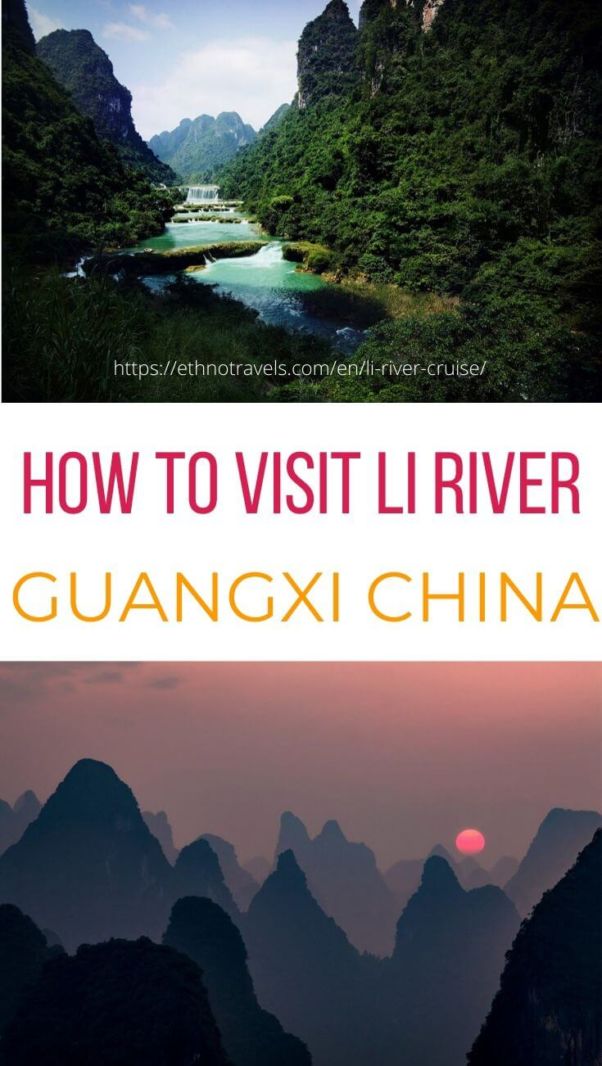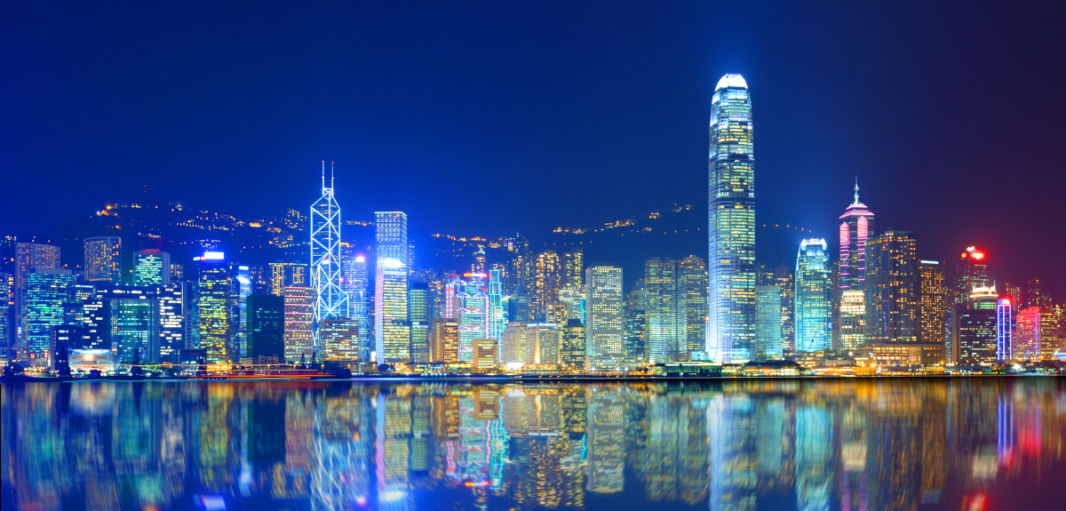Are you visiting Guangxi soon and wondering if you should take a Li River cruise? You will find in this article my opinion and all my practical advice on this magnificent region of southern China, elected one of the 10 most beautiful aquatic wonders in the World by National Geographic.
The most famous part for the Li river cruises is the one from Guilin to Yangshuo, but I propose you a different way to discover these sumptuous landscapes.
In this article, I’ll explain:
- where Li river is located and its most beautiful course.
- how to organize a cruise.
- how to hike along the river.
- information to prepare your stay.
FAQ on Li river.
The Li River is famous for its karst peaks, such as on Halong Bay in Vietnam. The National Geographic has voted it one of the 10 most beautiful aquatic wonders in the world.
Prefer February to October, when the river is at its highest.
Take a bus. You will find a link to book in my article.
Cruises on 3 and 4 star boats are only in the Guilin Yangshuo direction. From Yangshuo, you can either take the bus, take your rental car, do part of the trip by bamboo boat or/and hiking. You will find all the useful information in my article.
It is 164 kilometres long. From Guilin to Yangshuo, it is 86 km long.
Where is Li River situated?
The Li River is located in the Guangxi region of China. It flows 164kms from Xing’an county to Pingle county. The part from Guilin to Yangshuo, which measures 86kms, is famous for its landscapes of karst peaks and its cruises.
Check out this map, which shows the route from Guilin to Yangshuo and indicates the classic cruise boarding locations, 40 minutes by car from Guilin. A classic cruise is a cruise with big boats, a kind of more or less luxurious ferry. The cheapest ones, the 3 stars, have a sound system that works almost continuously. The second ones, the 4 stars, have wider seats, modern toilets and offer a buffet. They all have the crowd in common, although the 4 stars have a smaller capacity.
Their departure is between 9 and 10 am from Zhujiang port. They arrive in Yangshuo around 1:30 pm. They take about 4 hours when they make the complete route.

What is the most beautiful trip on Li River?
The most interesting part of the trip is between the villages of Yangdi and Xingping. This is where you can see the most beautiful karst peaks.
How to organize the Li River cruise?
Rather than doing the classic cruise with the crowd, I advise you to rent a bamboo raft between the villages of Xingping and Yangdi.
I advise you to leave from Xingping for practical reasons:
- It’s closer to Yangshuo than Yangdi.
- Yangshuo is a very pleasant city despite the tourist boom. It’s easy to move around and find your way around. Guilin is a more modern city, less welcoming, overcrowded, where it is very difficult to find your way around and where you have to move systematically by bus or taxi.
- You can stay in Xingping to leave with the raft in the morning.
- From Yangdi, you will easily reach Guilin, from where you can take a bus to your next destination.
Xingping is a fishing village a few kilometers from Yangshuo. It is about 50 minutes drive from Yangshuo. Leave Yangshuo in mid- or late morning and check into your hotel. This will give you time to have lunch in the village, negotiate your bamboo raft for the next morning and walk around the area.
Warning: the taxi and boat drivers are very insistent when getting off the bus. I advise you to go directly to your hotel or the nearby river to negotiate the boat.
When I arrived near the river, I went to a woman who was less insistent than the others to negotiate the cruise. We couldn’t understand each other. Luckily, a young Chinese man was passing by and the woman asked for his help. Lei, who would then travel with me for about ten days, negotiated the raft on my terms, then took me to eat in the village before going to my guesthouse… where he was staying too!
INFO +: When I leave for my cruise the next morning, Lei asked me if he could come with me and make the return trip. He had to return to Yangshuo to pick up some things. He had already made this cruise, but with a big boat and had not been able to take full advantage of the splendid landscape because of the crowds. He largely preferred the serenity of our raft trip.
If you still want to do the classic cruise, you can book it on Trip.com, the most important Chinese travel site.
>>> Click here to book your cruise

Where to stay in Xingping ?
I recommend you stay at the Xingping Ancient Town Riverside Hotel Yangshuo. Contrary to what its name might suggest, it is located in the village of Xingping. You can book it on Trip.com website.
>>> Click here to check the availability
What to do in Xingping?
- Visit the charming alleys in the old part of the village, with its old wooden houses.
- Eat local specialities in one of the restaurants of the village.
- Take the path overlooking the river to get to the 20 yuan banknote landscape. This misty and mysteriously inspiring mountain landscape is a perfect match for the romantic representation that Westerners can have of China.
- If you want to spend two nights in Xingping and fully enjoy the karst peaks, do the 12km round trip from the village to Nine horse fresco and back. Count 4 to 5 hours.
INFO +: Observe the red papers affixed around the doors of the houses. Red is the colour of luck. On the tombs, the papers of the feast of the dead are red too, as are the fake notes and firecrackers. At the time of the Spring Festival, also called Lunar New Year (Chinese New Year), which takes place around January or February depending on the year, the Chinese arrange these papers around the doors to invite good fortune to enter the house. On the papers, one can find the symbol “Fu” which means good fortune or happiness. For the Chinese, writing the name of a thing is a way to make it happen. One can also find the representation of the God of Happiness or the representation of the gods guarding the doors, who protect the house against evil spirits and misfortune. Finally, we can find the children of happiness. This chubby little boy and girl bring protection, luck and happiness. We can also see the so-called springtime discs. These are poems presented in pairs and hung vertically to the left and right of an entrance for New Year’s Eve. They are usually four, five or seven characters long and attract wealth, good fortune and abundance, both at home and in business. A third horizontal band of four characters, which distills the essence of the disticles, is affixed to the lintel of the entrance door. The poems must be identical in number of characters, composition, syntax and structure. They can express a wish for happiness, longevity, wealth, good harvest, numerous descendants… Originally, this tradition allowed the family to show its art in writing these poems. Now the papers are pre-printed and the poems are pre-made.

Is it possible to make the Li River cruise and hike on the same day?
Yes!
Our guide dropped us off in an old village a few kilometers from Yangdi. For me, it was the end of the cruise and the beginning of my trek through fields and rice terraces to Yangdi. We first went around the village and Lei was able to explain to me the meaning of the various objects hanging above some doors: mirrors, scissors or knives intended to keep the evil spirits away from the house.
During the cruise, we had some rain, but the mist and rain inspired poetry and added magic to these Chinese landscapes.
My walk ended with another ferry crossing and then I was accompanied to a bus to Guilin. As usual, people helped me find my way and change bus. They even told me the local fares so that no one would try to rip me off. When I gave the ticket clerk the exact amount, he had a knowing smile on his face.
When I arrived in the big city of Guilin, I was pleased not to have stayed there. There, the bus drivers were demanding exorbitant prices. I finally found a small local bus to the rice fields of the dragon’s backbone terraces in Longsheng, then another one to the village of Ping’an.
What is the best period for the Li River cruise?
From March to November, when the water level is at its highest.
The landscapes along the Li River are different in every season.
- In spring or after the rain, the weather is foggy and the lush peaks are shrouded in a veil like a painting.
- Summer and autumn are generally sunny and offer unobstructed views of small villages with old buildings in the green karst hills.
- Late autumn and winter are mild to cold, serene and calm.

The food specialities of the area.
One night in Yangshuo, I decided to go to an original restaurant. I wanted to test the cashew nut bee larvae. Unfortunately, this speciality can only be tasted at certain times of the year, and I had to fall back on a more classic dish, because I was not at all tempted by certain specialities that I had decided not to try: dog, rat…
Here are a few culinary specialties I’ve seen: ragondin, civet (although it’s strictly forbidden to eat them), fox, snake, hedgehog, deer horns, shark fins, big black flies, beetles of all sizes, good big toad full of buttons, hundred-year-old eggs (duck eggs preserved for 100 days in a clay mixture, of chopped straw and quicklime that turn black), scorpions, dried jellyfish, bull penis, fish swim bladder, jars of drinks with various bizarre contents (snake, insects and other charming bugs).
Conclusion.
You now have all the information you need to make the most of your discovery of the Li River in Guangxi.
Have you ever visited Yangshuo and/or Guilin? What was your experience of the Li River? Tell us in the comments!
For more articles about China, visit this page.
This article contains compensated links. As an Amazon Partner, I earn on qualifying purchases. See the legal disclaimer for more information.
Save on Pinterest for later.





